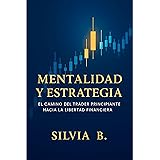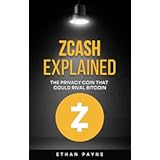Mastering the Micro-Timeframe: The 15-Minute Bitcoin Chart
The 15-minute chart for Bitcoin trading (BTCUSD) is often perceived as a potent arena for scalpers, yet it presents a unique blend of opportunity and peril. On this timeframe, price action is meticulously scrutinized, with each candlestick representing a condensed narrative of supply and demand dynamics over a brief period. The inherent volatility of Bitcoin means that significant percentage moves, which might take hours or days on higher timeframes, can manifest within minutes, making it a double-edged sword for the aggressive trader.
Firstly, the rapid succession of data points necessitates swift decision-making. Traders operating on this scale are not merely observing trends; they are actively interpreting the pulse of the market, often aiming for small, incremental gains that accumulate over multiple trades. This demands an acute understanding of market microstructure, including order book dynamics, bid-ask spread variations, and the impact of large market orders. A 15-minute chart is less about grand directional bets and more about exploiting transient imbalances.
Decoding Price Action on the 15M Chart for BTCUSD Scalping
In the realm of BTCUSD scalping, the candlestick patterns observed on the 15-minute chart are interpreted with heightened sensitivity. Classic formations such as engulfing patterns, dojis, and hammers are often used as immediate signals for potential reversals or continuations. However, their efficacy is amplified when corroborated by contextual factors specific to the lower timeframes.
-
Volume Analysis Integration: A critical element to discerning genuine price action from mere noise involves robust volume analysis. Spikes in volume accompanying specific candlestick formations on the 15-minute chart can lend significant credence to a potential trade setup. For instance, a strong bullish engulfing candle closing above a key resistance level, especially when supported by an abnormally high buying volume, is frequently interpreted as a conviction signal for a long entry. Conversely, high selling volume on a bearish pin bar at an expected support can denote a failed breakdown attempt.
-
Market Structure Shifts: Price structure, characterized by higher highs and higher lows in an uptrend, or lower highs and lower lows in a downtrend, provides a foundational framework. On the 15-minute chart, reversals in this microstructure are often precursors to profitable scalping opportunities. A “break of structure” (BOS) or a “change of character” (CHOCH) – where the market fails to make a new high/low and then breaches the preceding swing low/high – can signal a shift in immediate bias. These shifts are frequently exploited by traders seeking to capture the initial momentum of a new micro-trend.
The market’s tendency to seek liquidity, similar to water flowing to the lowest point, often manifests as price sweeping above or below significant highs or lows before reversing. Such “liquidity sweeps” are prime hunting grounds for crypto day trading strategies, particularly when confirmed by rapid rejections and subsequent moves in the opposite direction on the 15-minute timeframe.
Advanced Technical Analysis for Short-Term Bitcoin Trading
Beyond basic price action, a sophisticated blend of technical indicators is commonly deployed in Bitcoin technical analysis for 15M chart trading. These indicators are not infallible prophecies but rather probabilistic tools that, when used judiciously, can provide a statistical edge.
Utilizing Oscillators and Trend-Following Indicators
Oscillators such as the Relative Strength Index (RSI) and Stochastic Oscillator are invaluable for identifying potential overbought or oversold conditions on the 15-minute chart. Divergences between price action and an oscillator, where price makes a new high but the oscillator fails to, are often seen as strong signals of impending trend exhaustion. For a scalper, detecting such subtle shifts can be the difference between profit and loss within moments.
1. Moving Averages as Dynamic Support/Resistance: Exponential Moving Averages (EMAs), particularly the 9-period, 21-period, and 50-period, are frequently employed as dynamic support and resistance levels. Price interactions with these EMAs on the 15-minute chart—bounces, retests, and crossovers—are closely watched. For instance, a quick bounce off the 21-EMA in an uptrend, especially after a brief pullback, can be an ideal setup for a continuation scalp trade. The angle and separation of these EMAs can also provide insight into the strength and momentum of the prevailing micro-trend.
2. MACD for Momentum Confirmation: The Moving Average Convergence Divergence (MACD) indicator, while often considered lagging, provides crucial insights into momentum shifts. Crossovers of the MACD line and signal line, particularly near the zero line, can validate a change in the short-term directional bias. A bullish crossover above the zero line on the 15-minute chart, especially after a period of consolidation, can signal renewed buying interest suitable for an aggressive long scalp.
3. Bollinger Bands for Volatility Assessment: Bollinger Bands, comprising a simple moving average and two standard deviation bands, offer a visual representation of market volatility. Price movements near the outer bands, particularly after a “squeeze” (narrowing bands), can signal an impending volatility expansion. Scalpers often look for price breaking out of the bands or rejecting from them as potential entry/exit signals, aiming to capture the snap-back or continuation of these explosive moves.
Establishing a Robust Risk Management Framework for BTC Scalping Strategies
For any form of crypto trading, but especially for high-leverage short-term trading like Bitcoin day trading, an impregnable risk management protocol is not merely advisable; it is existential. The rapid price fluctuations on the 15-minute chart can decimate trading capital if positions are not meticulously managed. The objective is to preserve capital and ensure longevity in an inherently unpredictable environment.
-
Position Sizing Based on Volatility: A fixed percentage of capital per trade, typically 0.5% to 1%, is a common directive. However, with Bitcoin’s volatility, a static position size may expose one to disproportionate risk during high-volatility periods. An adaptive approach, where position size is adjusted inversely to the prevailing Average True Range (ATR) on the 15-minute chart, is often implemented. This ensures that the monetary risk per trade remains consistent, regardless of market conditions. When volatility expands, fewer units are traded; when it contracts, more units can be considered.
-
Strict Stop-Loss Placement: Every trade initiated on the 15-minute chart must be accompanied by a predefined, non-negotiable stop-loss. This stop-loss is not merely a number but a point of invalidation for the trade idea. For scalpers, stop-losses are typically tight, often placed just beyond a recent swing high/low, a key support/resistance level, or a specific candlestick formation. The quick execution of stop-losses is paramount to preventing small losses from escalating into catastrophic drawdowns. The mechanical adherence to stop-losses is often considered the bedrock of sustained profitability in high-frequency trading.
-
Profit-Taking Protocols and Trailing Stops: Just as crucial as managing losses is the effective realization of profits. Scalpers often employ a staggered profit-taking approach, selling portions of their position at various price targets as the trade progresses. A common strategy involves taking partial profits at a 1:1 or 1:1.5 risk-to-reward ratio and then trailing the stop-loss for the remainder of the position to capture extended moves. This allows for capital recycling and reduces exposure once a significant portion of the expected move has materialized. The ability to lock in gains systematically is a hallmark of disciplined BTC trading.
In essence, the pursuit of profits in Bitcoin analysis on the 15-minute chart is an intricate dance between rapid pattern recognition, technical validation, and stringent risk control. The dynamic nature of BTCUSD trading necessitates a continuous refinement of these strategies, ensuring that the trader remains agile and responsive to the market’s ever-changing rhythm.







